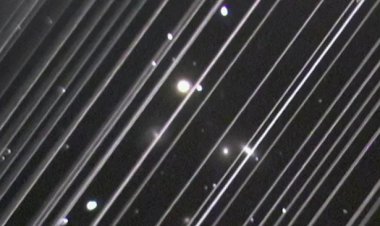The story of dire wolves goes beyond de-extinction
Some question whether the pups are really dire wolves, or just genetically tweaked gray wolves. But the technology could be used to help at-risk animals.

According to a biotech business and a flurry of recent headlines, Romulus, Remus, and Khaleesi are the first dire wolves to walk the earth in almost 10,000 years.
Colossal Biosciences declared on April 7 that three dire wolves, extinct creatures that existed during the Pleistocene ice ages, had been born, marking what they called the "world's first de-extinction." The puppies became instantly famous. They resembled characters from the fantasy television show Game of Thrones, with their muscular bodies and snowy-white coats.
News reports heralded the animals as “scientifically seismic” and said “the dire wolf is back.” Still, some scientists aren’t buying it. “That is no more a dire wolf than I am Wonder Woman,” says Jacquelyn Gill, a paleoecologist at the University of Maine in Orono.
The issue largely boils down to genetics. Colossal didn’t create the animals from a fully reconstructed dire wolf genome. Instead, the company relied on the genetic instruction book of a gray wolf, making changes to it based on ancient DNA recovered from two dire wolf specimens. But, Gill says, “for something to be a dire wolf, it should have the full genetic blueprint of a dire wolf.” What Colossal has done, she says, is simply create a genetically modified gray wolf.
But that type of thinking “kind of misses the point,” says Beth Shapiro, chief science officer at Colossal Biosciences in Dallas. Colossal’s goal wasn’t to create something genetically identical to a dire wolf, she says. Instead, researchers wanted to resurrect the animal’s core attributes, like size, body type and face shape. By making a handful of genetic changes, “we’ve brought these extinct genes back to life in a living animal,” she says. Ultimately, Shapiro says, “I’m happy to call that a dire wolf.”
And a new preprint to be posted soon counters one common critique of the work, showing that dire wolves may be more closely related to modern wolves than previously thought.
Colossal has a history of controversy. The business received praise last month when it revealed "woolly mice," opulently haired rodents that had undergone genetic alterations modeled after woolly mammoths. Although the rodents' golden-brown fur made them famous online, some experts doubted that this development would help the field get any closer to reviving woolly mammoths.






















